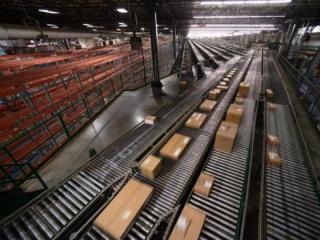Five key considerations for micro-fulfillment centers

As we’ve heard time and time again, the retail industry and supply chain have gone through unprecedented change as a result of the COVID-19 pandemic.
Today, new situations continue to arise that cause new challenges – e.g., international wars, domestic strike concerns – that are creating obstacles to the distribution of goods. It seems as though we get through one challenge only to face another these days.
From all the chaos, there have been positive outcomes. For example, we are seeing retailers spend time thinking about the foundational elements that will have a great impact on the health and strength of their supply chains well into the future, whatever disruptions lie ahead.
One of the emerging trends is the addition of micro-fulfillment centers (MFCs), small-scale storage facilities or warehouses, to a retailer’s supply chain. These have a much smaller footprint than an average warehouse and are often operated out of an existing brick-and-mortar store.
As with anything, there are pros and cons and considerations to make when determining whether an MFC is right for you, your business, and your customers.
Are you delivering to a densely populated consumer base?
Micro-fulfillment centers tend to make the most sense in areas where consumers are closer to the distribution source. In this scenario, an MFC can significantly reduce delivery costs, improve the consumer experience and create brand loyalty. A good example is Amazon.
While on a scale and size all of its own, Amazon is able to deliver a package with just a driver and a truck. Because they have an MFC, they can also enhance the return process by partnering with other local companies, saving consumers a trip to the Post Office.
How quickly do your products need to get from distribution center to aisle?
For grocery retailers, MFCs make sense because they’re dealing with perishable items with a limited shelf life, such as produce. With smaller-scale facilities nearby a retailer’s physical store locations, they can reduce the amount of time between distribution center and shelf. For retailers that sell non-perishable items, a quick turn-around might not be as critical.
Will it be a competitive advantage?
Even if you’re dealing with non-perishable items, there may be a reason to consider MFCs: competition. If you are falling behind in customer satisfaction and/or losing business to retailers who are able to get products to consumers more quickly, an MFC strategy might be a viable option.
In addition to helping improve customer satisfaction, MFCs can deliver increased order fulfillment efficiency, which can tie nicely with the omnichannel strategy. Customers gain same-day delivery and pick up options. Retailers like Walmart and Albertsons used MFCs to keep up to Target when they launched their same day delivery/pick up options.
Are the costs a pro or a con?
Typically, adding MFCs to your overall supply chain strategy requires a significant investment. While there are savings to be had – e.g., shipping costs, operational/resources, retailers need to determine whether those will make it a worthwhile expense.
For example, MFCs often play a role in optimizing inventory management, which leads to more satisfied customers, quicker-turn products on the shelves and more relevant and efficient purchasing processes. If you are competing for consumer loyalty, the expense might be a game-changing business decision.
It’s important to note that suppliers might also leverage an MFC as part of their supply chain strategy. They will sometimes partner with retailers who include them as part of their overall strategy; it helps both parties ship more quickly to consumers, improves collaboration and streamlines peak season ordering.
Is omnichannel part of your future business strategy?
For smaller retailers, an MFC doesn’t always make sense. However, it shouldn’t be a black-and-white decision based on size. Rather, it should be part of the overall business strategy, and whether an MFC can lay a solid foundation on the path to the next step.
For example, a smaller retailer who is taking the steps towards building an omnichannel business could more easily test items and consumer sentiment. If something is not selling, a quick-turn of those items is easier in an MFC environment.
In addition, one of the biggest trends we’re seeing today is same-day delivery or pick-up. Consumers don’t want to wait to receive their purchases. A local MFC can help retailers meet those demands and establish their brand as one that is constantly evolving to meet their customers where they are, and want to be.
While micro-fulfillment centers will not be the right avenue for every retailer (or supplier), they are a viable option for many who are looking to keep up with changing consumer behaviors and demands. As order volume shifts or increases, it’s important to recognize a pivot to accommodate those changes may be needed.
And for some, utilizing an MFC could be a beneficial solution, especially with a clear strategy in place that considers and addresses the pros and cons for your unique brand.





